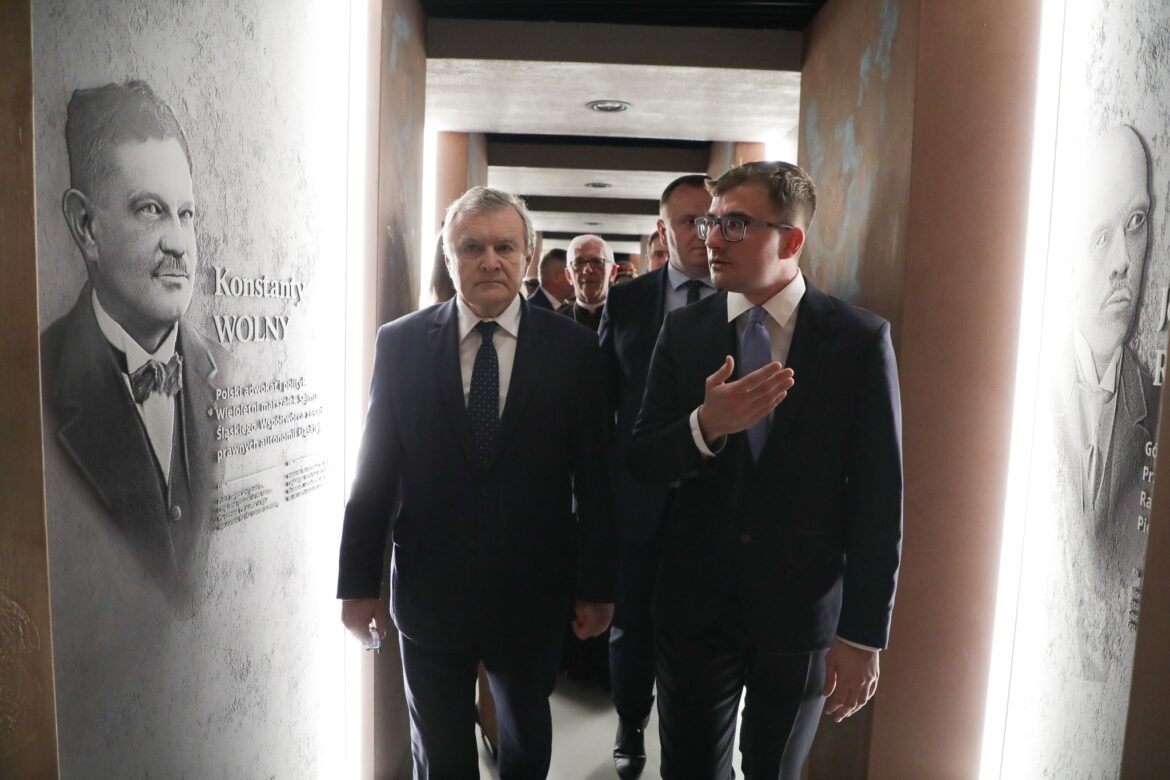The Upper Silesian Pantheon commemorating the heroes important for the history of the region was opened on the ground floor of the Cathedral of Christ the King in Katowice.
Prof. Piotr Gliński, deputy prime minister, minister of culture and national heritage said that the story of the Pantheon begins with St. Hedwig of Silesia and St. Hyacinth of Poland (Odrowąż) showing dozens of people who rendered great service to Silesia: political activists, soldiers, clergy, teachers, people of culture and sportsmen. “It is like an open encyclopedia of Silesia”, said Prof. Gliński.
Minister emphasized that this is a great monument commemorating the 100th anniversary of the three Silesian Uprisings and joining the part of Upper Silesia to the Fatherland in 1922. He also expressed the hope that it would be an important place on the cultural map of Katowice, Silesia and the whole of Poland; a place of education, building Polish identity and “reflection on the sacrifice of those who allowed us to feel Polish today”.
One of the main goals of creating the Pantheon is to commemorate people and their merits for the Polishness in Upper Silesia, with particular emphasis on creators, artists, scientists, politicians, soldiers and clergy of the Church.
The new cultural institution will conduct cultural, scientific and educational activities related to the history of Upper Silesia after the end of World War I.
The initiative to establish the Upper Silesian Pantheon was firstly announced by Archbishop Wiktor Skworc in November 2018. On February 18, 2020, in Katowice, the Minister of Culture and National Heritage, the Katowice Archdiocese, the City of Katowice and the Silesian Voivodeship signed an agreement on the establishment and operation of a joint cultural institution under the name “Upper Silesian Pantheon in Katowice”.
The Ministry of Culture and National Heritage financed 82% of the construction of the Upper Silesian Pantheon, allocating nearly PLN 40 million for this purpose.
Adrian Andrzejewski





